Updated: 26-May-2020
Marquardt Aircraft Co. was founded in 1944 by Roy Edward Marquardt, in Venice, California and later moved to Van Nuys, California, adjacent to the Van Nuys Airport. At that time it was the only company that was specialized in ramjet engines. The company grew well, acquired other companies, and diversified. In 1968 it merged with CCI Inc. Throughout the 1970s and 1980s pieces of Marquardt were sold off or merged with other firms. In 1991 the rocket-propulsion division was sold to Kaiser aerospace & Electronics Corp and continued as Kaiser-Marquardt. In 2000 Kaiser sold it to Primex Technologies (Now Aerojet Rocketdyne).
-It was mainly dedicated to the construction of ramjets and small rocket maneuvering engines.
-The ramjets were subsonic or supersonic, there were even developments of nuclear ramjets -like the PLUTO project- through Marquardt's own Nuclear Systems Division.
-There were also projects of Hyperjets engines, of ramjets combined with a rocket engine for speeds above 4 Mach (tested on Lockheed X-7 aircraft at 3.5 Mach).
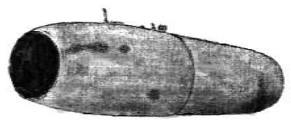
“C-20”
-The C-20 ramjets were manufactured and tested in their own laboratory.
-They were intended for target aircraft such as the Martin KDM-1. They were also mounted on the wing tips of an F-80.
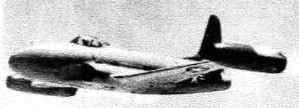
“Shooting Star F-80”
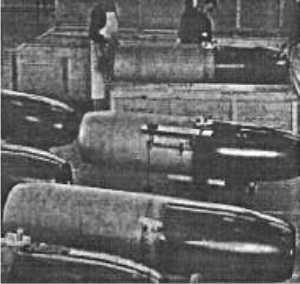
“C-20 in production”
-The Marquardt C-20 was 20 inches in diameter and its power equivalent to speed and maximum height was 2,500 HP, although its net thrust was around 600 Kgf.
-The C-20 had the US Navy designation RJ-30-MA-6.
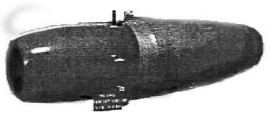
“C-30”
-The C-30 was a derivative of the previous one with 30 inches in diameter.
-The MA-19G was a C-20 variant with 20 inches in diameter as well.

“MA-19G”
-The MA-20C was supersonic, measured 28 inches in diameter and was 170 inches long.
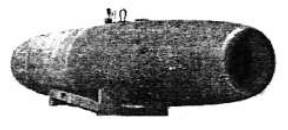
“MA-20C”
-From the attached diagram we see that the geometry of the air intake is fixed, a central body contains the controls for the fuel, which is injected into the convergent-divergent type combustion chamber by means of a pump driven by the "ram effect" caused by the aircraft's speed that rotates a small air turbine.

“Helicopter with Marquardt M-14 pulsejets”
-The RJ-30, 34, and -39 were also made, and the PJ-40 and -46 pulsejets as well.
-The MA-20C had a flame holder after the injectors and then the exhaust nozzle with a small venturi. The more than 600 MA-20C engines that were manufactured and approved as RJ-43, had good applications in the following variants:
-RJ-43-MA-1, on the X-7, test vehicle.
-RJ-43-MA-3, on the Bomarc missile.

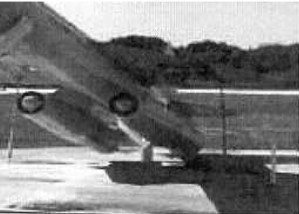
“The Bomarc and its ramjets”
-RJ-43-MA-5 on the Q-5 target vehicle.
-RJ-43-MA-7 on the Super Bomarc.
-The 42-cm diameter Marquardt MA-74 ramjet on the North American Redhead.
-The MA-212XAA with a pitot inlet operated between 0.7 and 1.5 Mach between sea level and 30,000 feet.
-The MA-212-XAA with conical intake had speeds from 1 to 2.5 Mach and from sea level to 60,000 feet.

“MA-212-XAA”
-The thrust at maximum altitude and speed of 2.5 Mach was 617 Kgf. (1,360 lbf).

“MA-225-XAA”
-The MA-225-XAA was derived from the MA-215-XAA on the Ryan Firebird, target aircraft. It had a max speed of 2.5 Mach and was low cost.
-It delivered 7500 lbf of thrust at full speed. In the illustration it appears on the Marquardt Laboratory test bench.
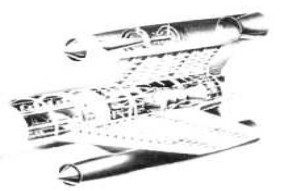
“Ramjets on Navaho”
-For the RJ-57 and RJ-59 ramjets information is not available because it is still classified.
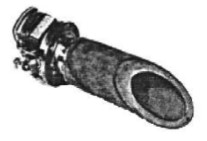
“R1E”
-In the field of rocket engines, all of them were small, and they are notable for their use, such as the maneuvering R1E, on the Orbiter Shuttle.
-They ran on special liquid fuels such as nitrogen tetroxide and monomethyl hydrazine. They had hypergolic ignition.

“R4D”
-R4Ds are maneuvering engines. The R4D-11 was used on the INSAT-1 satellite and the R4D-12 for a Hughes vehicle.
-They delivered over 100 lbf thrust each and with R1E fuels.
-The R6C are derived from the previous ones, and are used on satellites.
-The R30 is a precision rocket for the Tiros-NO satellite, with 155 lbf of thrust.
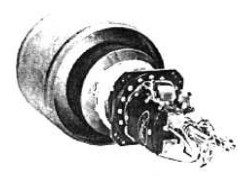
“R40A”
-The R40A is used on the Shuttle orbital vehicle, with 870 lbf of thrust.
-The REA series was also used for satellite maneuvering. The -10 model gave 0.09 Kgf of thrust.
-And there were the models -16, -17, -20.4, 22-16, 22-17, 22-2, 22-5, 39-5. All of them gave little thrust and used hydrazine as fuel.
-The M-109 rocket engine gives 100 lbf of thrust and we can see its size by the hand that holds it.

“M-109”
-It uses nitrogen tetroxide, hydrazine and asymmetric hydrazine dimethyl (UDMH).
-An experimental development of the ramjets, it is the rectangular one to help take off and for hovering of helicopters.

“Marquardt tip jet”
-The most advanced are the "Scramjets" like the MA-196, suitable for subsonic and supersonic speeds below 4 Mach and above almost 5 Mach. It was tested with classic fuel and liquid hydrogen.
From Appendix A1/6: In 1950 this Van Nuys brand in California featured an interesting turbine engine that worked on ram-air and hydrogen peroxide.
-They were to be used on high-altitude supersonic missiles, not as the main plant, but to drive the precise accessories such as the hydraulic control system, the electrics and the fuel pumps for the ramjets.
-It did not have a compressor since it used the ram-air effect.

“Marquardt ram-air turbine engine, cutaway”
-Below we show a cutaway drawing of the Marquardt XRJ-31-MA-1 to see, in this order, the intake, a diffuser, the fuel injector and the spark plug, a flame holder and the outlet nozzle .
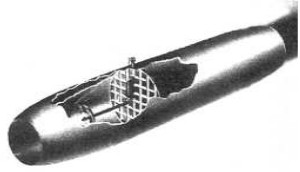
“Marquardt XRJ-31-MA-1 cutaway”
-Another ramjet of this brand, the MA-20C with official name RJ-43-M-1, now appears in a drawing with a tapered outer fish shape.

“Marquardt RJ43-M-1 drawing”
-By 1960 Marquardt was already made up of three partners: Marquardt itself, Reaction Motors and Olin Mathieson.
-It was also called the OMAR Group.
-The RJ43 had a supersonic "double-shock wave" inlet and was built in large quantities. It was 28 inches in diameter.
From Appendix 6: Below we show a photograph of a starting helicopter with Marquardt pulse jets. This machine appears in the main text.
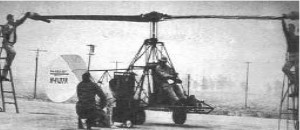
“The Marquardt Whirljet”
-Now we see the dependence needed in this operation because it requires two operators, one in front of each engine to inject compressed air, supplying the "ram-air" when the rotor is stopped.
-Electricity for ignition is supplied from the base of the helicopter.
-Both fuel and energy for ignition pass through the interior of the blades.
-Marquardt ramjets were tested on several aircraft.
-We now provide the test that was done with the North American P-51 Mustang with which it obtained an additional thrust that led the airplane to reach 350 m.p.h.
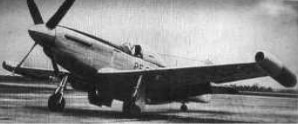
“Mustang con Marquardt”
-En el Museo Air Victory está expuesto un motor de la marca del tipo estatorreactor, modelo C20D
-In the Air Victory Museum there is a ramjet-type Marquardt engine, model C20D.
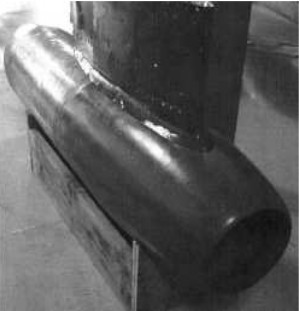
“Marquardt C20D”
-In this publication we have seen that this brand has also manufactured rocket engines. We provide another bipropellant for liquid and hypergolic fuel, the R-1E model.
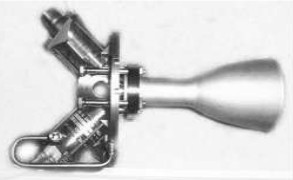
“Marquardt R-1E engine” (PiP)
-It can run in pulse or continuous mode. The oxidant is Nitrogen Tetroxide and the fuel is Monomethyl Hydrazine or Aerozine 50/50. Its thrust is low as its size, 22 lbf.
-For the Services Module of the Apollo program Marquardt made the small 100 lbf engine to maintain attitude and maneuver in space. It was the RCS (Reaction Control System).
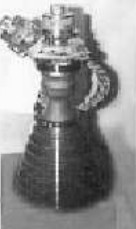
“Marquardt's RCS”
-It runs on MMH (monomethyl hydrazine) and nitrogen tetroxide. The actual installation was a cluster of four engines oriented in four directions as we see in the below illustration.
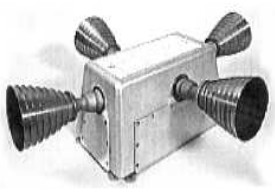
“Four RCS cluster”
-The Marquardts RBCC-program engines were “monopropellants” N2O2, (and JP-4) an almost unknown experimental one.

“Marquardt RBCC”

“Marquardt RBCC in more detail”
From Appendix 9: We show a new view of the Ramjet M-43 in which we can see its outer line. It is able to run at 300 mph and uses Oct 80 Mogas gasoline.
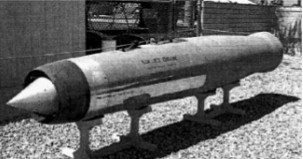
“The Marquardt M-43 ramjet” (PiP)
-They tested the Lockheed Martin D-21 at the NASA Dryden Base. It was an unmanned spy plane with a speed of two or three times Mach, and that was powered by a Marquardt ramjet.
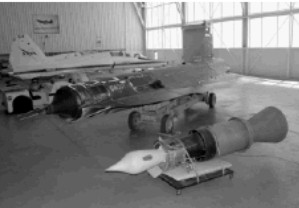
“An F-104, the D-21 and its engine in the foreground”
-The engine was a Marquardt XRJ-43-MA20S-4. This was a successor to the MA20 carried by the Bomarc B.
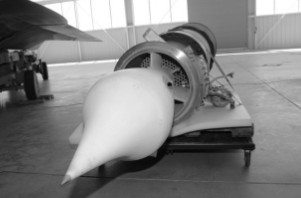
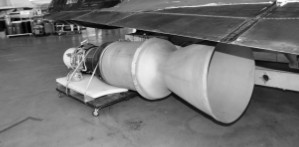
"Marquardt XRJ-43 engine, both ends"
-It was launched from other media such as a B-52 or SR-71. Also with the help of a booster to reach its operation speed.
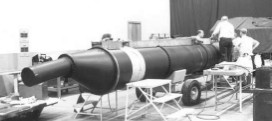
"Solid Booster for the D-21" (AEHS Photos)
From Appendix 10: New photo of the Mustang P-51 testing two ramjets. It reached 350 mph.
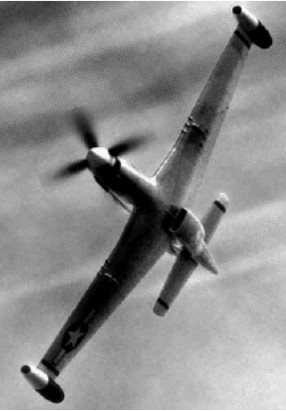
“The two ramjets on the P-51”
Engines of MARQUARDT
Model: C-20, -D
Arquitecture:
Chambers:
Fuels:
Feed System:
Ignition:
Thrust:
Weight:

"Marquardt C20D"
Model: C-30
Arquitecture:
Chambers:
Fuels:
Feed System:
Ignition:
Thrust:
Weight:

"Marquardt C-30"
Model: C-48
Arquitecture:
Chambers:
Fuels:
Feed System:
Ignition:
Thrust:
Weight:
Model: M-109
Arquitecture:
Chambers:
Fuels:
Feed System:
Ignition:
Thrust:
Weight:

"Marquardt M-109"
Model: M-14 pulsejet
Arquitecture:
Chambers:
Fuels:
Feed System:
Ignition:
Thrust:
Weight:
Model: M-43
Arquitecture:
Chambers:
Fuels:
Feed System:
Ignition:
Thrust:
Weight:
Model: MA-196
Arquitecture:
Chambers:
Fuels:
Feed System:
Ignition:
Thrust:
Weight:
Model: MA-19G
Arquitecture:
Chambers:
Fuels:
Feed System:
Ignition:
Thrust:
Weight:

"Marquardt MA-19G"
Model: MA-20C
Arquitecture:
Chambers:
Fuels:
Feed System:
Ignition:
Thrust:
Weight:

"Marquardt MA-20C"
Model: MA-212 XAA
Arquitecture:
Chambers:
Fuels:
Feed System:
Ignition:
Thrust:
Weight:

"Marquardt MA-212-XAA"
Model: MA-215
Arquitecture:
Chambers:
Fuels:
Feed System:
Ignition:
Thrust:
Weight:
Model: MA-225
Arquitecture:
Chambers:
Fuels:
Feed System:
Ignition:
Thrust:
Weight:

"Marquardt MA-225-XAA"
Model: PJ-40
Arquitecture:
Chambers:
Fuels:
Feed System:
Ignition:
Thrust:
Weight:
Model: PJ-46
Arquitecture:
Chambers:
Fuels:
Feed System:
Ignition:
Thrust:
Weight:
Model: R-1E
Arquitecture:
Chambers:
Fuels:
Feed System:
Ignition:
Thrust:
Weight:

"Marquardt R1E"
Model: R-30
Arquitecture:
Chambers:
Fuels:
Feed System:
Ignition:
Thrust:
Weight:
Model: R-40, -A
Arquitecture:
Chambers:
Fuels:
Feed System:
Ignition:
Thrust:
Weight:

"Marquardt R40A"
Model: R-4D, -11, -12
Arquitecture:
Chambers:
Fuels:
Feed System:
Ignition:
Thrust:
Weight:

"Marquardt R4D"
Model: R-6C
Arquitecture:
Chambers:
Fuels:
Feed System:
Ignition:
Thrust:
Weight:
Model: RBCC
Arquitecture:
Chambers:
Fuels:
Feed System:
Ignition:
Thrust:
Weight:

"Marquardt RBCC"
Model: RCS
Arquitecture:
Chambers:
Fuels:
Feed System:
Ignition:
Thrust:
Weight:

"Marquardt RCS"
Model: REA-10
Arquitecture:
Chambers:
Fuels:
Feed System:
Ignition:
Thrust:
Weight:
Model: REA-16
Arquitecture:
Chambers:
Fuels:
Feed System:
Ignition:
Thrust:
Weight:
Model: REA-17-12
Arquitecture:
Chambers:
Fuels:
Feed System:
Ignition:
Thrust:
Weight:
Model: REA-17-6
Arquitecture:
Chambers:
Fuels:
Feed System:
Ignition:
Thrust:
Weight:
Model: REA-20-4
Arquitecture:
Chambers:
Fuels:
Feed System:
Ignition:
Thrust:
Weight:
Model: REA-22-16
Arquitecture:
Chambers:
Fuels:
Feed System:
Ignition:
Thrust:
Weight:
Model: REA-22-17
Arquitecture:
Chambers:
Fuels:
Feed System:
Ignition:
Thrust:
Weight:
Model: REA-22-2
Arquitecture:
Chambers:
Fuels:
Feed System:
Ignition:
Thrust:
Weight:
Model: REA-22-5
Arquitecture:
Chambers:
Fuels:
Feed System:
Ignition:
Thrust:
Weight:
Model: REA-39, -2
Arquitecture:
Chambers:
Fuels:
Feed System:
Ignition:
Thrust:
Weight:
Model: RJ-30
Arquitecture:
Chambers:
Fuels:
Feed System:
Ignition:
Thrust:
Weight:
Model: RJ-31
Arquitecture:
Chambers:
Fuels:
Feed System:
Ignition:
Thrust:
Weight:
Model: RJ-34
Arquitecture:
Chambers:
Fuels:
Feed System:
Ignition:
Thrust:
Weight:
Model: RJ-39
Arquitecture:
Chambers:
Fuels:
Feed System:
Ignition:
Thrust:
Weight:
Model: RJ-43
Arquitecture:
Chambers:
Fuels:
Feed System:
Ignition:
Thrust:
Weight:
Model: RJ-57
Arquitecture:
Chambers:
Fuels:
Feed System:
Ignition:
Thrust:
Weight:
Model: RJ-59
Arquitecture:
Chambers:
Fuels:
Feed System:
Ignition:
Thrust:
Weight:
Model: XRJ-43
Arquitecture:
Chambers:
Fuels:
Feed System:
Ignition:
Thrust:
Weight:

"Marquardt XRJ-43, fig. 1"


